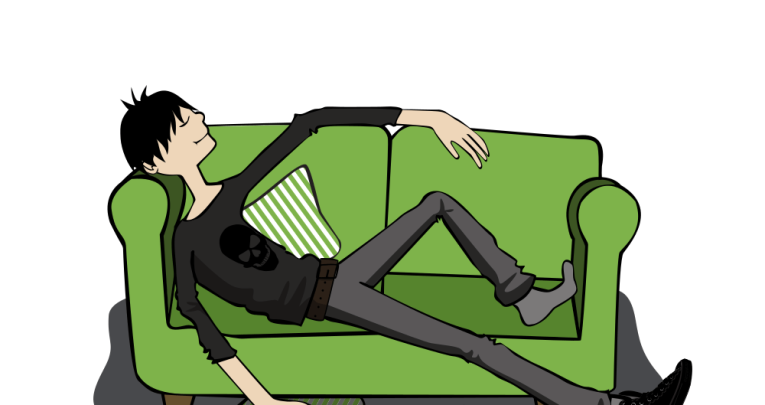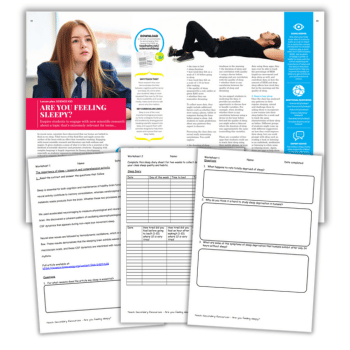The Science Behind why Teenagers are Tired – and how Schools can Plan Around It

Your students can’t help being tired at times, says Dr Nicola Davies – and understanding why will make it much easier to plan strategies to support their learning, all day long…

While ‘larks’ leap out of bed at first light, ready to start the day, ‘night owls’ are inclined to repeatedly hit the snooze button, staying under the covers for as long as possible. Yet often, being one of the latter kind has little to do with laziness, and much more to do with hormones.
Circadian rhythms – our biological clocks – vary over our lifetime. Young children tend to rise early, while teenagers often sleep late. And secondary school students are not members of the only species whose sleeping patterns are affected like this. Adolescent mammals, from monkeys to laboratory rats, also have delayed sleep cycles.
How it works
Sleep is triggered by two mechanisms – a homeostat, and a circadian rhythm. The homeostat is the drive for sleep, and depends on the length of time a person has been awake.
During sleep, neurochemicals – which build up when our waking brains use energy – are cleared from the brain.
On waking, these neurochemicals start to build up again and trigger neurons that promote sleep and inhibit those which promote wakefulness. So, the longer you’ve been awake, the stronger the homeostatic drive to sleep will be.
The biological clock is controlled by the suprachiasmatic nuclei (SCN) within our brain, which responds to light signals. When brightness reduces, the SCN triggers the release of the ‘vampire hormone’ – melatonin – and induces rest. When morning light increases, the production of melatonin is suppressed and we become more alert.
It’s unclear whether delays in teenagers’ circadian rhythms result from their biological clocks running more slowly overall, or whether their SCN have altered sensitivity to light.
Either way, though, asking a teenager to get out of bed at 7am to get ready for school can feel like a cruel and unusual punishment to the adolescent battling their biological clock.
And there’s more…
Teenagers don’t just have a delayed circadian rhythm; they also need more sleep than the average adult.
The National Sleep Foundation recommends that adolescents between 14 and 17 years of age get between eight and 10 hours sleep each night.
Combine this requirement for a long sleep with a delayed circadian rhythm, then, and it is easy to see why many teenagers are grumpy first thing in the morning, and why they may struggle to engage with those initial classes.
It doesn’t all come down to biology, however. A plethora of technology-based evening distractions, such as gaming and social media, can also make it difficult for a teen to get enough sleep.
Electronic devices emit blue light, which may slow the production of melatonin and increase delays in falling asleep. These activities are also cognitively arousing, keeping teens alert when it is time to relax. Stimulants such as caffeine and fizzy drinks can exacerbate such effects.
Finally, there can also be a disparity between weekend and weekday sleeping patterns. At weekends, teens often go to sleep later and get up later because they have the chance to follow their natural circadian rhythms.
Unfortunately, rather than allowing them to catch up on lost sleep, this simply leads to greater disruption; it’s even harder for them have an early night on Sunday when they’ve been to bed late (and risen late) for the past two nights. Perhaps you can relate to this?
What can schools do?
Some schools have introduced later starts to the day, with encouraging results. While this isn’t possible for many educational establishments, empathy and reasonable adjustments are feasible for all of them.
Teenagers are likely to experience dips in alertness in the early morning and mid-afternoon, between around 2 and 5pm, for example, so it might be best to avoid introducing very taxing material at the start of the day, or at the beginning of the first afternoon session.
Educating teenagers and their families about the importance of sleep is another useful intervention. While sleep hygiene habits can’t be imposed by teachers, the importance of adequate rest can be integrated into certain lesson plans or conversations in a way that shows an understanding of the teenage struggle with it (without demonstrating this understanding, any advice may fall on deaf ears).
Make these conversations interesting, rather than lectures, so that students can make up their own minds about the importance of what you are discussing.
If your class full of night owls aren’t as alert and eager as you would like, it may be time to offer both empathy and sleep education.
Remember, your students can’t change the way their bodies are wired. Equally, we can’t change their biology. However, we can understand their rhythmic struggles and encourage habits to help them get enough sleep to make the most of school.
Download a KS3 lesson plan about the science of sleep.











